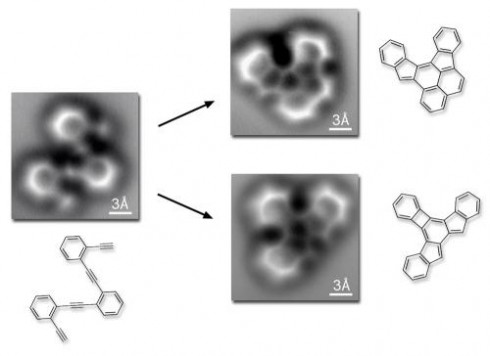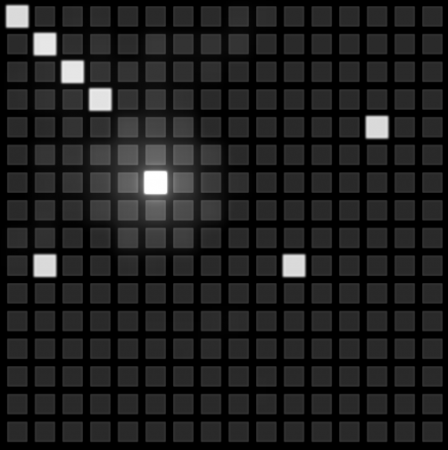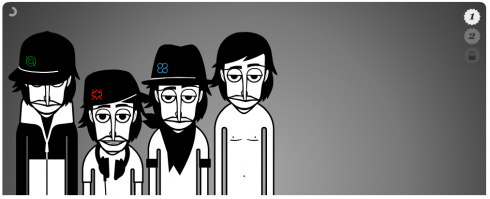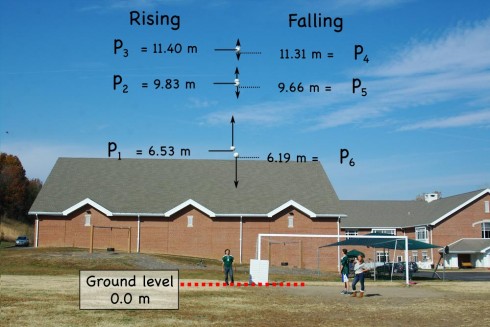Following closely after the first pictures of atoms we now have pictures of molecules reacting:

Middle and High School … from a Montessori Point of View
Following closely after the first pictures of atoms we now have pictures of molecules reacting:

A neat stop-motion movie made by manipulating individual atoms.
This is a great spark-the-imagination video because you can use it to talk about the physics of atoms and molecules, and what is temperature — they had to cool the atoms down to 4 Kelvin to keep them from moving too much.
How they did it:
More detail from Slate, and NPR:
Sulfur hexafluoride is transparent, so if you fill a fish tank with it you can’t really see that that tank’s filled with anything other than air. However, since sulfur hexafluoride is denser than air, you can float a light boat on the invisible gas for a cool demonstration of density.
Note: Air is about 80% nitrogen gas, which has the formula N2, and a molecular mass of 28 atomic mass units: the molecular mass is the sum of the atomic masses of all the atoms in a molecule. Sulfur hexaflouride has the formula SF6 and a molecular mass of 146 amu, making it about 5 times denser than air.
Smarter Every Day uses a high-speed camera to explain the rotational physics how cats manage to spin in the air and land on their feet.
Use Tone Matrix to generate music by clicking squares on a grid.

Another good music app comes from Incredibox:


If you throw a soccer ball up into the air and take a quick series of photographs you can capture the motion of the ball over time. The height of the ball can be measured off the photographs, which can then be used for some interesting physics and mathematics analysis. This assignment focuses on the analysis. It starts with the height of the ball and the time between each photograph already measured (Figure 1 and Table 1).

Table 1: Height of a thrown soccer ball over a period of approximately 2.5 seconds. This data were taken from a previous experiment on projectile motion.
| Photo | Time (s) | Measured Height (m) |
|---|---|---|
| P0 | 0 | 1.25 |
| P1 | 0.436396062 | 6.526305882 |
| P2 | 0.849230104 | 9.825317647 |
| P3 | 1.262064145 | 11.40310588 |
| P4 | 1.674898187 | 11.30748235 |
| P5 | 2.087732229 | 9.657976471 |
| P6 | 2.50056627 | 6.191623529 |
When you pluck a guitar string, the string moves up and down really fast. However, if you take a video of it with a digital camera with a rolling shutter (which most cameras have at the moment) it captures the motion of the string in a wavelike pattern that is proportional to the frequency of the motion of the string; the smaller strings move faster, create a higher pitched sound, and shows up as shorter-wavelength waves. Note: this is not the way the strings actually move, it’s an interesting, and potentially useful optical effect.
Because the optical effect really makes it look like there are a lot of internal waves rolling along the string — which there are not — I’d be quite cautious about using this in physics class. However, if a student wanted to go into the detail to understand how it works — and then explain it to the class, they can start with the math about standing waves in instrument strings and the relationship between sound pitch and wave motion, and a visual explanation of the rolling shutter effect: